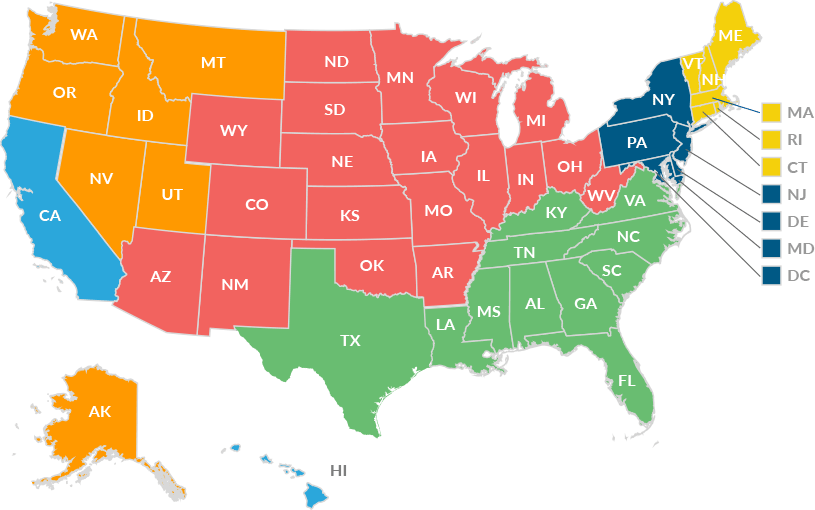type below and hit enter
Search the blog
SCHOOL SALES
SCHOOL IMPROVEMENT
SCHOOL DEVELOPMENT
Browse by topic
I'm Dr. Jeannie Gudith, Founder and CEO of JAG Consulting. We help you develop, improve, buy or sell your private school.
I'm so glad you're here
How Accreditation Works and Why Your School Needs It
Obtaining accreditation status for schools is a necessity these days and serves as an important decision-making factor for parents when choosing a school, and rightfully so. When a school holds accreditation status, it means an outside agency has thoroughly vetted its academic programs for rigorousness, quality, and adherence to educational standards.
Additionally, it ensures that a school is stable, both fiscally and structurally. Accreditation agencies create certain standards for accreditation that a school must follow in order to obtain this status. The Department of Education trusts these outside agencies as authorities in determining whether schools meet such criteria.
Due to fact that state and federal governments do not monitor private schools, they rely on these accrediting agencies to ensure that schools meet academic and quality standards. Private schools are not required to be accredited, however, schools that want to compete in the industry are compelled to seek out accreditation in order to stay competitive.
Keep reading to learn more about the importance of accreditation and why it is important that your private school seek out accreditation status.
The Importance of Accreditation

#1 Accountability
Private schools differ from one another and develop in differentiating ways depending on their missions and school focus. Because private schools are exempt from rigid state and federal regulations, they maintain their freedom from governmental oversight and, therefore, have to find alternative measures to assess and demonstrate their schools quality.
For private schools, accreditation is an effective pathway for school accountability and improvement.
#2 Improvement
Because accreditation is voluntary, the school must agree to join an accrediting agency and commit to meeting those standards. These agencies set standards and procedures to accredit schools and hold them accountable. For private schools this can be a helpful process as it gives insight and perspective on ways to improve their school.
#3 Accept transfer Credits
Students transferring from one school to another, or eventually to college, will need their credits to transfer. Unfortunately, not all credits are created equal. Credits from an unaccredited school may not be transferable to another school or institution. Accreditation may not guarantee that other institutions accept transfer credits, but it improves the chances of acceptance. Usually, most schools will accept credits from another accredited school.
#4 Graduation
In addition to accepting transfer credits, another benefit of being an accredited school is that other schools and colleges will accept your students diploma.
Accreditation puts a stamp of approval on graduates. Students graduating from an accredited school indicates that graduates are expected to be ready to practice at a certain level. This is important to colleges and student acceptance to those colleges. A degree from an unaccredited school may hinder career prospects.
Types of Accreditation
#1 Regional
Schools can hold two different types of accreditation: regional or national. Regional accreditation is considered the best accreditation status as it has been around the longest and approximately 85% of schools hold this type of accreditation. It is not only the most common form of accreditation, but also the most prestigious because it typically imposes stricter academic standards.
Regional accreditation agencies oversee schools based on geographic location, with each agency covering certain groups of states. Below are the six regional accreditation agencies:
Regional Agencies
Middle States Commission on Higher Education (MSCHE)
Schools in New York, Delaware, Maryland, Pennsylvania, the District of Columbia, Puerto Rico and the Virgin Islands are accredited by MSCHE.
New England Association of Schools and Colleges
Commission on Institution of Higher Education (NEASC-CHE)
Schools in Rhode Island, Maine, New Hampshire, Vermont, Connecticut and Massachusetts are accredited by NEASC-CHE.
North Central Association of Colleges and Schools
The Higher Learning Commission (NCA-HLC)
Schools in Wyoming, Arizona, North Dakota, West Virginia, Missouri, Ohio, Indiana, Arkansas, Colorado, Iowa, New Mexico, South Dakota, Wisconsin, Nebraska, Illinois, Minnesota, Oklahoma, Michigan and Kansas are accredited by NCA-HLC.
Southern Association of Colleges and Schools (SACS)
Commission on Colleges
Schools in Florida, Texas, Louisiana, North Carolina, Tennessee, Alabama, Kentucky, Georgia, Virginia, Mississippi and South Carolina are accredited by SACS.
Western Association of Schools and Colleges (WASC)
Accrediting Commission for Community and Junior Colleges (ACCJC-WASC)
Schools in California and Hawaii in addition to those in American Samoa, the Territories of Guam, the Republic of Palau, the Commonwealth of the Northern Mariana Islands, the Republic of the Marshall Islands, and the Federated States of Micronesia are accredited by ACCJC-WASC.

Blue – Middle States Commission on Higher Education
Yellow – New England Association of Schools and Colleges
Orange – Northwest Commission on Colleges and Universities
Green – Southern Association of Colleges and Schools Commission on Colleges
Light Blue – Western Association of Schools and Colleges (ACCJC, SCUC)
#2 National
National accreditation accounts for only about 15% of schools. They typically accredit vocational, technical, or career-based schools. Agencies for national accreditation establish criteria for accreditation through comparison against other similar institutions vs rigorous standards that all schools must follow.
Credits earned at nationally accredited institutions generally transfer only to other schools with national accreditation. These types of schools often have more flexible admissions standards and cost less than regionally accredited institutions.
The following are some of the more predominant national accrediting agencies currently evaluating colleges and universities at the institutional-level:
Faith-based Accreditors
- Association of Advanced Rabbinical and Talmudic Schools – Accreditation Commission (AARTS) (no website available)
- Association for Biblical Higher Education – Commission on Accreditation (ABHE)
- Association of Theological Schools – Commission on Accrediting (ATS)
- Transnational Association of Christian Colleges and Schools – Accreditation Commission (TRACS)
Career-related Accreditors
- Accrediting Bureau of Health Education Schools (ABHES)
- Accrediting Commission of Career Schools and Colleges (ACCSC)
- Accrediting Council for Continuing Education and Training (ACCET)
- Accrediting Council for Independent Colleges and Schools (ACICS)
- Council on Occupational Education (COE)
- Distance Education and Training Council – Accrediting Commission (DETC)
- National Accrediting Commission of Career Arts and Sciences, Inc. (NACCAS)
How to Become an Accredited School?

The process of obtaining accreditation has several steps.
First, an accreditation agency works with a school to establish reasonable criteria that must be met to receive accreditation. Typically these agencies have a set of standards that must be met in order to become accredited. This begins the candidacy process.
Second, a school then conducts a self-evaluation or self-study with these standards in mind. If the school determines that it complies with the standards, it moves to the next step. This process typically takes about 3-6 months as all stakeholders must be involved in the self-evaluation.
Third, the school hosts an outside evaluation team sent by the accrediting agency. This process customarily spans over a few days and involves multiple evaluators depending on how large the school is. This process can be a stressful one as the planning of the visit is substantial. Just planning for this visit can take 3-6 months.
Lastly, once the evaluation team is satisfied that the proper standards have been met, the agency officially grants accreditation to the school. Once this accreditation has been granted, the agency continues to monitor the institution, and occasionally launches a full reevaluation (usually every 5 years) to ensure that it continues to meet the standards.
Earning and maintaining processes for accreditation may vary slightly between agencies; however, accreditors themselves must go through similar processes in order to earn recognition from the U.S. Department of Education.
Need Support?
Because this process can be overwhelming, many schools will hire an outside accreditation consultant or educational consultant to assist with the process. These consultants understand the accreditation procedures well and can streamline the process.
Interested in becoming an accredited school but don’t know where to start? JAG Consulting Services can help. Contact us to learn more about the process and how we can streamline your accreditation experience.
I'm Dr. Jeannie Gudith, Founder and CEO of JAG Consulting. We help you develop, improve, buy or sell your private school.
I'm so glad you're here
Hello!
© 2023 JAG CONSULTING.
all rights reserved. privacy policy + REFUND POLICY. TEMPLATE by sugar studios + Showit